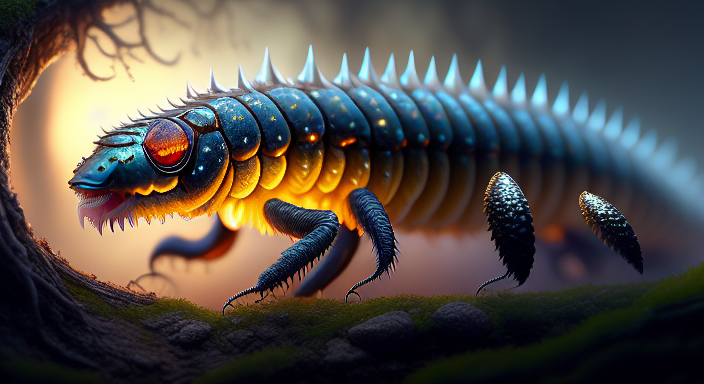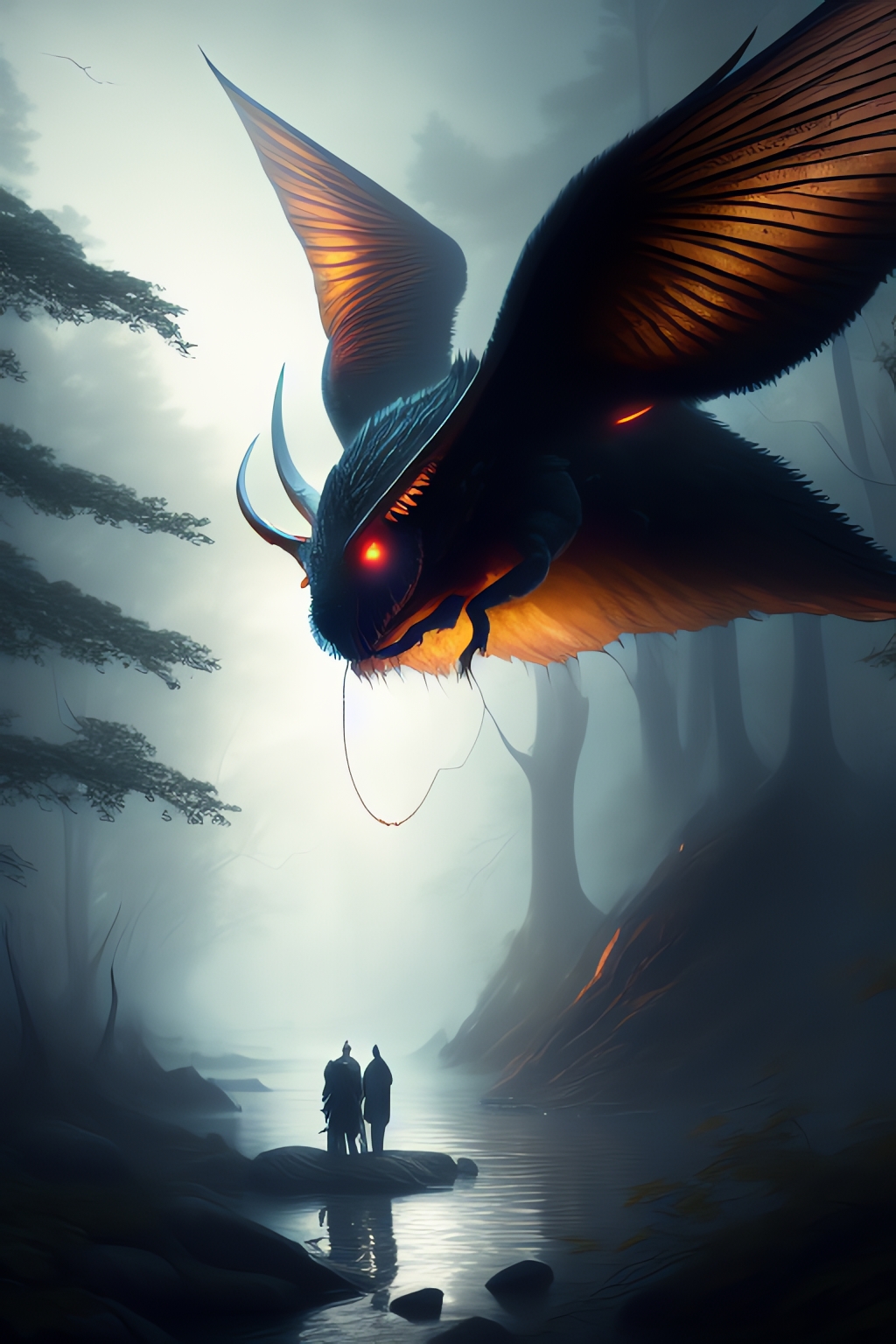Nightmare Moth
The Nightmare Moth is a massive insectoid creature that dwells in various regions in the world of Xeovis, predominantly warm climates such as the swamps near the Chich Lakes region of Nashata on the Western Continent and the forests within the wildlands on the Eastern Continent. Its torso length is anywhere from two to four meters long, with a wingspan of four to eight meters. They are generally harmless to humanoids, but will devour the silk of spiders and the leaves of certain trees, though during mating season, it is indeed a nightmare. The males are incredibly territorial during mating season and anything entering its domain will find its fangs.
Mating Season & Reproduction
During mating season, which usually occurs for ten to fifteen days every two years in the middle of summer, the male will stake a claim to a number of females, and anyone entering its domain will be subjected to its wrath. Mating season is when nightmare moths earn their name. The fangs that male nightmare moths show during mating rituals and territorial disputes are actually their reproductive organs. A female moth will lay a clutch of eggs in a sac, and the male will fertilize the egg sac by biting into it. The nightmare moth's egg clutch generally contains between ten and sixty eggs, with a live hatch rate of over ninety percentLarvae
The larvae of the nightmare moth are a nightmare themselves. Large beetle-grub hybrids of up to four feet at birth erupt from the egg, and the sound of the shells cracking can be heard from miles away. The larvae are multi-limbed, but their foremost legs are also used as arms to feed or defend themselves. Nightmare moth larvae will eat just about anything, from leaves and branches to flesh.
Their hard carapace is a great defense against any natural predators, excluding sentients, due to its many spikes and ridges, and has been used in armor smithing for many years due to its sturdy nature. A discovery by a student of biology at The University at Onin suggests that the many spikes on the armor are natural water collectors to help keep the larva hydrated, especially in high-humidity environments.
Their hard carapace is a great defense against any natural predators, excluding sentients, due to its many spikes and ridges, and has been used in armor smithing for many years due to its sturdy nature. A discovery by a student of biology at The University at Onin suggests that the many spikes on the armor are natural water collectors to help keep the larva hydrated, especially in high-humidity environments.




Comments